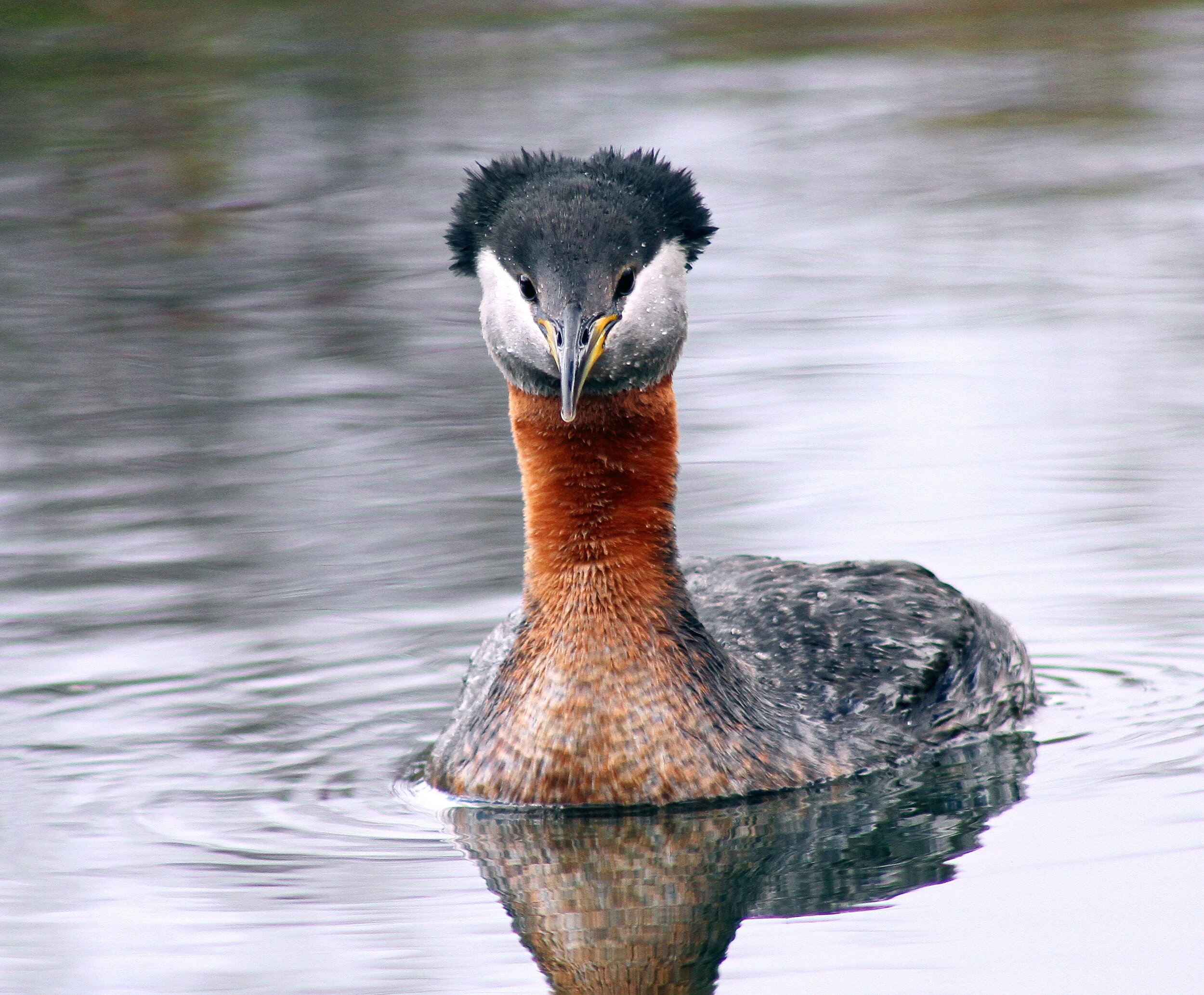Bird of the Month: Red-necked Grebe
By Hugh Jennings
PC: John Pizniur/Great Backyard Bird Count (Red-necked Grebe)
Scientific Name: Podiceps grisegena
Length 18 in
Wingspan 24 in
Weight 2.2 lb
AOU Band code RNGR
The Red-necked Grebe is a winter visitor to the marine waters of Washington and has a particular affinity for Puget Sound where it enjoys eating fish and crustaceans which it captures during dives which are sometimes quite deep. In summer it also eats aquatic insects from the water’s surface or catches low-flying insects. It can be pugnacious and will often attack other birds feeding close to it. It arrives in Washington waters by October and early November and will depart in April to return to its breeding grounds in Alaksa, Canada and some states including northeastern Washington in Okanagan County.
The Red-necked Grebe shares the Podiceps genus with the Horned Grebe (P. auritus) and Eared Grebe (P. nigricollis) and is the largest of the three but smaller than the Western Grebe. Podiceps is from the Latin podex, the anal orifice, and pes, foot, referring to the fact that when swimming its feet appear to be coming out of its rump. Grisegena, gray cheeked, is from the Latin griseus, gray, and gena, cheek, referring to its gray cheeks seen in breeding plumage (Holloway). Some birds in breeding plumage can be seen in April (Bell & Kennedy). Until 1957 it was known at Holboell’s Grebe.
In winter the Red-necked is often solitary and sometimes miles from shore in contrast to its raucous self on the breeding grounds. The courtship display can be very loud with paired birds simultaneously rising out of the water chest to chest. They will also hold a ritual dance holding weeds brought up from the bottom of a lake. They share nest building. The nest is a floating mass of weeds with a depression in the top and anchored to standing plants. Four to five bluish or pale buff eggs are deposited which are incubated by both parents for about three weeks. The young can swim soon after hatching and may also be seen riding on their parents back. First flight research is not consistent and it may take the young grebe ten weeks to mature enough to fly.
The North American population of Red-necked Grebes is thought to be around 45,000 individuals but they are typically underrepresented on Christmas Bird Counts probably because of their solitary nature and widely disbursed numbers (Stout & Nuechterlein). For the same reason it is difficult to calculate population trends. Draining and drying of the pothole region of North American is seen as a threat to their numbers.
In winter the Red-necked has a gray neck and gray cheek patch which extends toward the posterior of the crown to form a crescent-shaped patch. The back of the head and back are a dark gray-brown. The bill is dusky with yellow at the base. It is not often seen in flight when white secondary feathers and a white patagial (front edge of wing) panel are visible. In alternative (breeding) plumage the neck and chest are chestnut and the throat and cheek are gray outlined in white. The head and back are glossy black.


